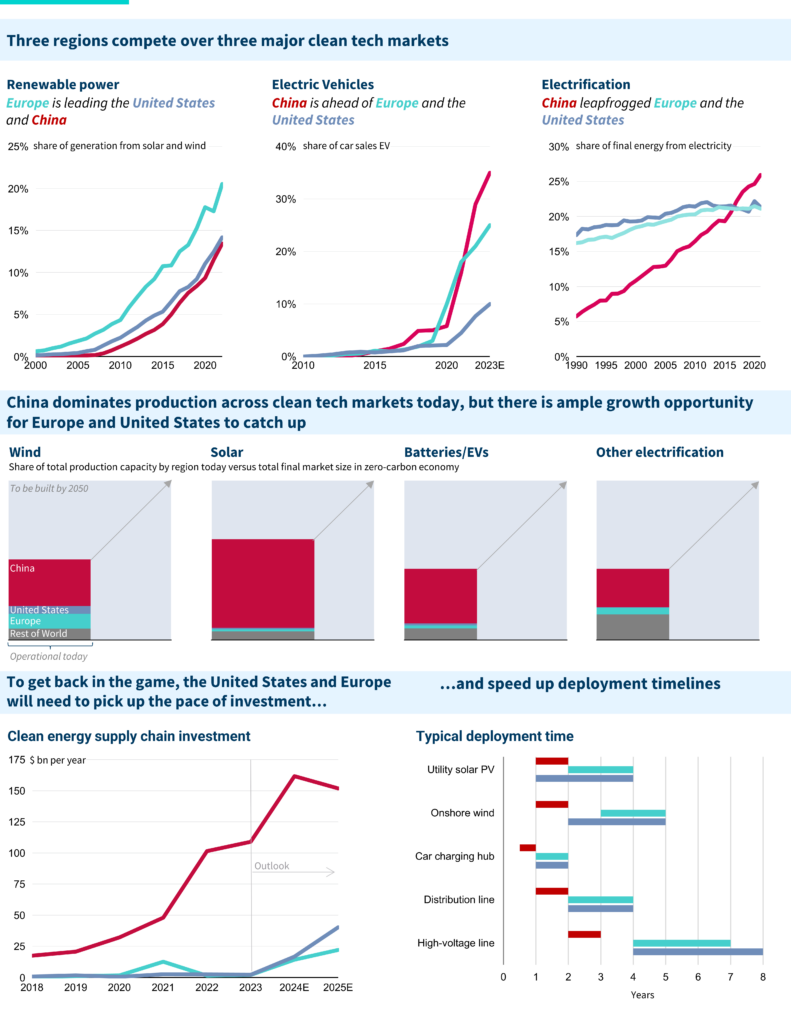
Report | 2024
X-Change: The Race to the Top
Cleantech competition between China, Europe, and the United States
X-Change: The Race to the Top is the fourth report of the X-Change series. The series analyzes the exponential growth of renewable energy technologies, demonstrating why and how major areas of the global energy system are achieving faster change than many realize. The series is produced by RMI in partnership with the Bezos Earth Fund and as a contribution to Systems Change Lab.
In X-Change: The Race to the Top, RMI looks at the contest between China, Europe, and the United States to make and deploy the energy technologies of the future. China is in the lead in many of the key cleantech races. However, as the report details, the game is still in its early stages and Europe and the United States have a lot to play for. Furthermore, the competition between these regions will speed up change in the Global South.
The report focuses on four races: clean technology supply chains, solar and wind deployment, electric vehicle (EV) sales, and electrification:
- China dominates clean energy supply chains, having outspent the United States and Europe 10-fold in the past five years to achieve market share in manufacturing of over 90 percent in solar and 70 percent in batteries. But United States and European capital expenditures are set to increase 16-fold by 2025.
- Solar and wind deployment is a close contest with all three regions accelerating up S-curves. Europe has the largest share of electricity from solar and wind.
- China is leading in the EV race, with Europe not far behind. Over one-third of Chinese cars sales are already electric, and this is likely to rise to 90 percent by the end of the decade.
- China has leapfrogged in electrification to become the first major electrostate. Over the past decade, China has increased the electricity share of final energy by 1 percentage point every year to a level of 27 percent in 2022, more than 5 percentage points higher than the United States and Europe, which have remained static. The main driver has been the electrification of Chinese industry, which has already driven a 2014 global peak in industrial demand for fossil fuel energy.
In 2022, the United States and Europe woke up to the degree of Chinese leadership in the energy technologies of the future, and now the race is more even. Considering the race is still in its early stages, the future is filled with ample opportunities. However, seizing these opportunities requires overcoming the obstacles that slow the transition down. In the context of the renewable revolution, barriers to change are barriers to geopolitical influence. Leaders will need to find solutions to make and deploy cleantech if they wish to avoid relative decline.
The Race to the Top in Six Charts
Source: Energy Institute, IEA EV outlook 2023, IEA World Energy Balance, BNEF Energy Transition Investment Trends, IEA World Energy Outlook (WEO) 2022
